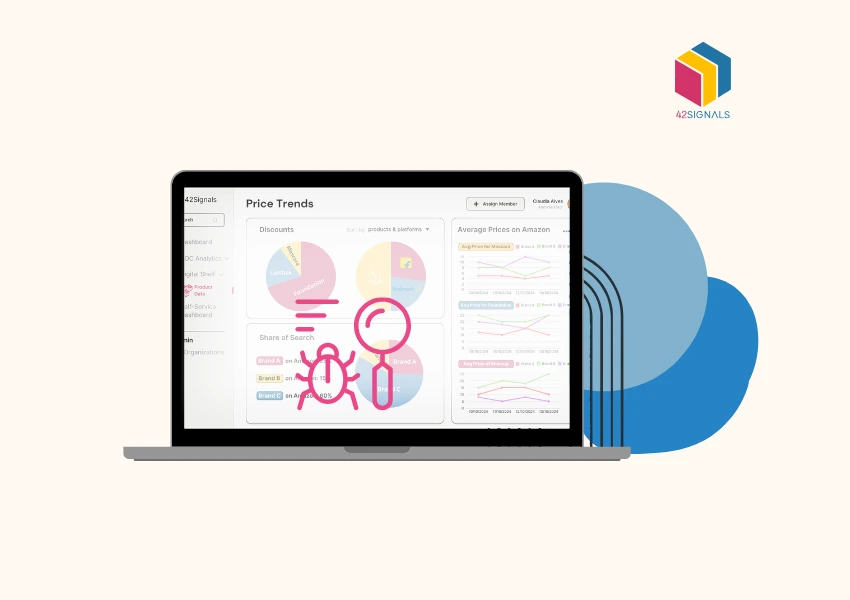Have you ever wondered how certain companies manage to disrupt the marketplace and gain a dominant position seemingly overnight? While various factors contribute to a brand’s success, one of the most influential aspects is a comprehensive market and product category analysis. In today’s hyper-competitive e-commerce environment, striking a balance between branding and competitive pricing is crucial. Retail analytics, particularly price analytics, plays a pivotal role in helping businesses sustain long-term growth, optimize sales strategies, and maintain a competitive edge.
Data-driven decision-making empowers businesses to refine their pricing models, monitor market trends, and implement strategies that enhance profitability and customer satisfaction.
Overcoming Data Overload with Price Analytics
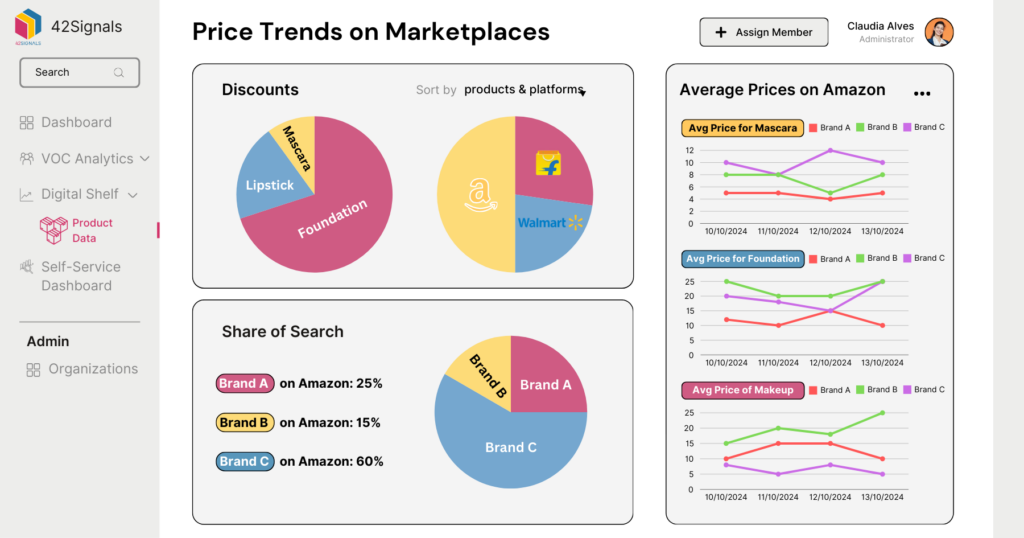
The e-commerce landscape is inundated with data. While access to vast amounts of information can be beneficial, it can also be overwhelming. Companies often struggle with analysis paralysis, where excessive data impedes decision-making instead of facilitating it.
This is where retail analytics platforms like 42Signals come into play. They help businesses navigate the complexities of pricing data, answering critical questions such as:
- Why are sales declining for a particular product?
- What factors contribute to one product outperforming another?
- How can pricing adjustments influence customer behavior?
Leveraging a robust analytics platform enables businesses to make sense of complex data and develop actionable strategies. Striking a balance between in-depth market insights and practical decision-making ensures that companies remain agile and responsive in a rapidly evolving market.
Gaining a Competitive Advantage Through Data Insights
To stand out in the crowded e-commerce space, businesses must ask the right questions and gather insightful answers to fully understand price analytics.
Understanding competitors, market trends, and consumer preferences is essential to developing a strong positioning strategy. Some of the most critical questions businesses should explore include:
- How do customers perceive our brand and products?
- What unique value do we offer compared to competitors?
- What pricing strategies are competitors employing?
- How do competitors optimize their digital shelf presence?
Answering these questions enables businesses to perform detailed SWOT (Strengths, Weaknesses, Opportunities, and Threats) and PESTLE (Political, Economic, Social, Technological, Legal, and Environmental) analyses, equipping them with a 360-degree view of the competitive landscape.
Price Analytics: The Game Changer
Price analytics is one of the most impactful tools in e-commerce decision-making. It allows businesses to assess the profitability of different price points, understand consumer purchasing behavior, and refine pricing strategies for maximum revenue generation. Some key benefits include:
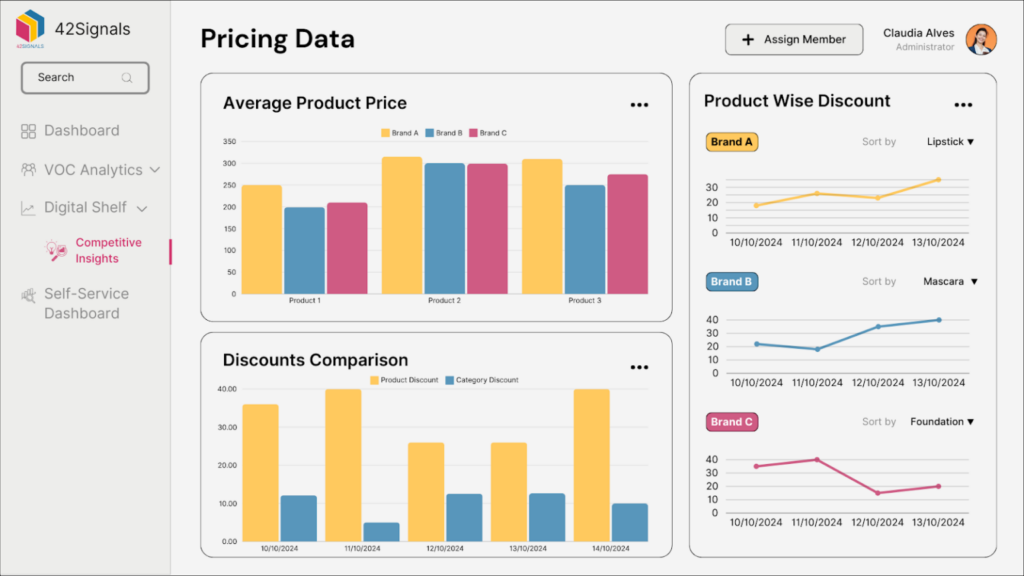
- Real-time competitive pricing insights: AI-powered tools can scan competitors’ price points and provide instant feedback, enabling businesses to adjust their pricing dynamically.
- SKU-level pricing intelligence: Companies can monitor price fluctuations and discounts at the SKU level, ensuring their products remain competitively priced.
- Optimized pricing strategies: Insights from price analytics help businesses determine the best price points that maximize both conversion rates and profit margins.
By leveraging automated price analytics tools, businesses can maintain a competitive edge without constant manual monitoring.
Category Benchmarking: Understanding Market Dynamics
Another essential aspect of price analytics is category benchmarking. This process involves analyzing product behavior across different e-commerce platforms, helping brands understand where they stand relative to their competitors.
Key aspects of category benchmarking include:
- Product performance tracking: Businesses can measure how well their products are performing in comparison to similar items in the market.
- Competitive positioning: Understanding how competitors market their products, from descriptions to promotional campaigns, enables brands to refine their strategies.
- Revenue intelligence: Analyzing revenue trends across product categories helps businesses identify emerging opportunities and optimize their catalog offerings.
By leveraging category benchmarking, businesses can create data-driven strategies that enhance product visibility and drive conversions.
The Importance of Digital Shelf Analytics
When products are listed on e-commerce platforms, digital shelf presence plays a crucial role in influencing consumer purchasing decisions. Digital shelf analytics provide insights into price analytics and:
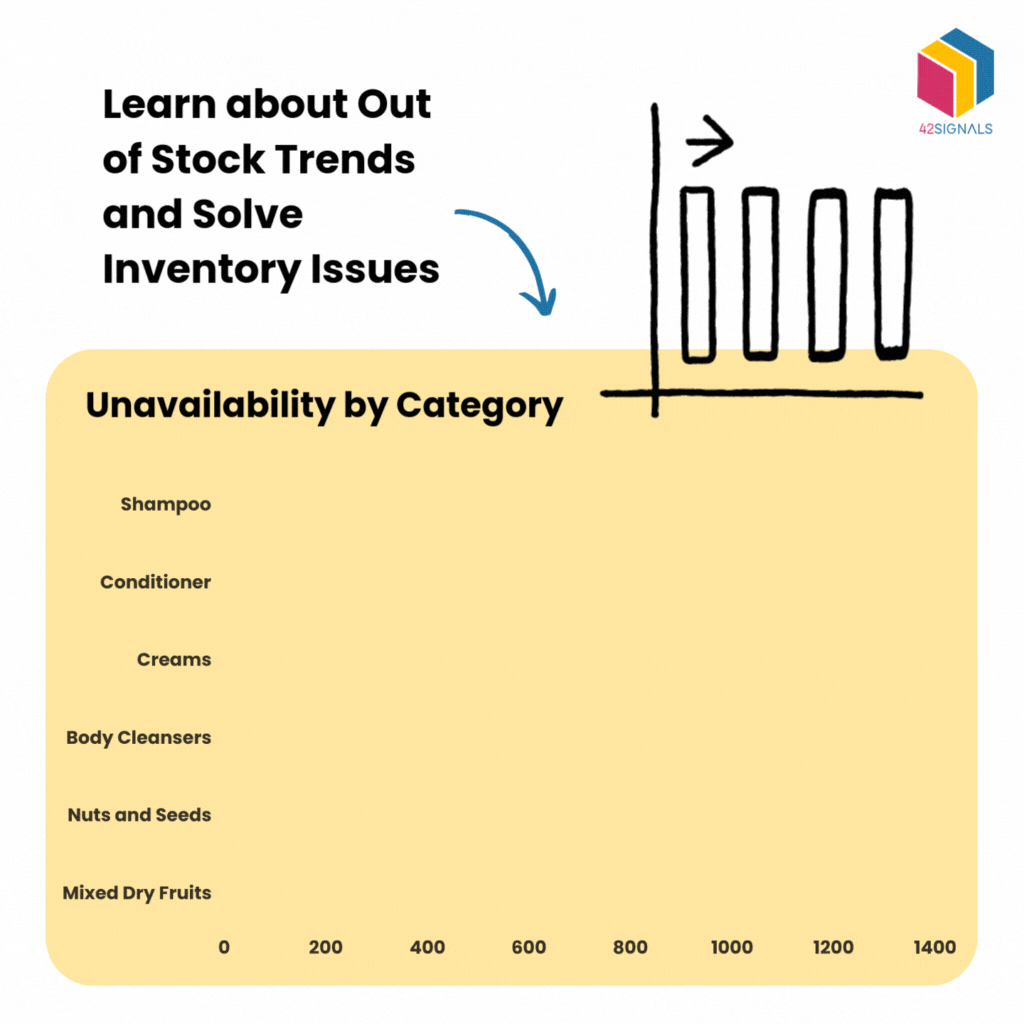
- Search ranking performance: Businesses can track which competitors are dominating search results and adjust their strategies accordingly.
- Stock and availability tracking: Monitoring competitor stock levels helps brands capitalize on out-of-stock scenarios by positioning their products as the best alternatives.
- User-generated feedback analysis: Customer reviews and ratings provide valuable insights into product performance and areas for improvement.
- And price analytics: Pricing data about category prices and competitor prices help understand what’s working and what’s not.
By implementing digital shelf analytics, brands can enhance their online presence, boost sales, and create a seamless shopping experience for consumers.
Zeroing in on the Competition with Advanced Price Analytics
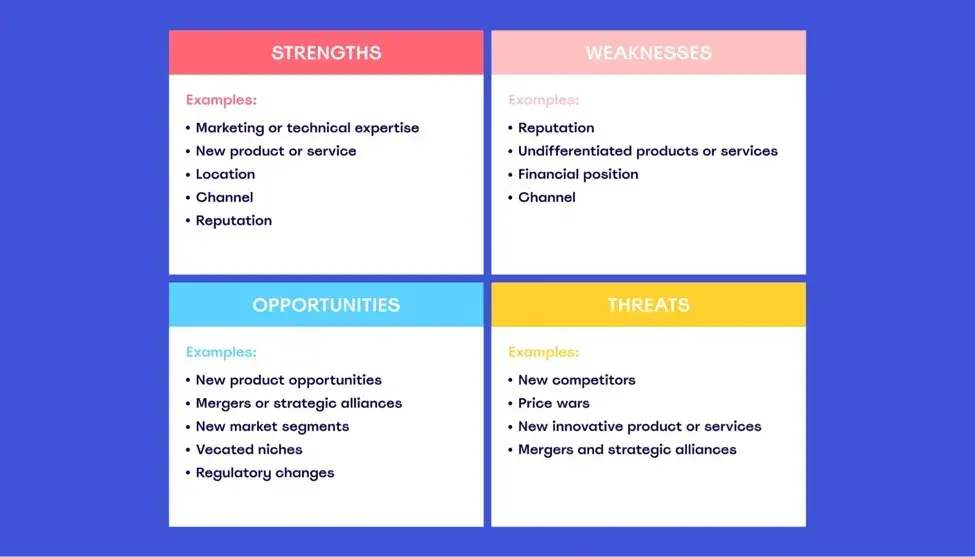
Image Source: Hubspot
The fast-paced digital commerce landscape requires businesses to be agile and proactive. Advanced analytics solutions help companies identify sales opportunities, track competitor strategies, and refine marketing tactics. Some key advantages of competitive intelligence in e-commerce include:
- Retailer and brand-level insights: Businesses can filter data by specific retailers, categories, and brands to gain deeper market insights.
- User behavior analysis: Analyzing customer reviews, ratings, and feedback helps businesses tailor their offerings to meet consumer expectations.
- Risk mitigation: Identifying price disparities, stock inconsistencies, and brand reputation issues allows businesses to address risks before they escalate.
By harnessing the power of digital shelf analytics, businesses can fine-tune their competitive strategies, improve product performance, and maximize revenue.
Conclusion on Price Analytics
E-commerce success is driven by data intelligence and strategic decision-making. Price analytics, category benchmarking, and digital shelf analytics play a crucial role in helping businesses thrive in competitive marketplaces. By leveraging automated analytics platforms like 42Signals, brands can:
- Gain real-time insights into market trends and competitor pricing
- Optimize product positioning and digital shelf presence
- Improve conversion rates and drive long-term profitability
To stay ahead in the e-commerce game, businesses must embrace data-driven strategies and leverage analytics tools to uncover new growth opportunities.
Frequently Asked Questions
What is price analytics?
Pricing analytics is the process of analyzing pricing data to optimize pricing strategies, maximize revenue, and improve profitability. It involves examining customer behavior, competitor pricing, market demand, and sales trends to make data-driven pricing decisions.
What is the meaning of pricing analysis?
Pricing analysis is the evaluation of product pricing based on various factors like cost, demand, competition, and customer willingness to pay. It helps businesses:
- Identify optimal pricing strategies.
- Adjust prices based on market trends.
- Improve profitability while maintaining competitiveness.
What are the four types of analytics?
The four main types of analytics used in pricing and business strategy are:
- Descriptive Analytics – Analyzes past pricing data to identify trends and patterns.
- Diagnostic Analytics – Determines why pricing changes affected sales performance.
- Predictive Analytics – Uses historical data and AI to forecast future pricing trends and demand.
- Prescriptive Analytics – Provides recommendations on optimal pricing strategies based on data insights.
What is the meaning of price point analysis?
Price point analysis evaluates how different price levels impact customer demand, sales volume, and profitability. It helps businesses:
- Identify the ideal pricing tier for maximum revenue.
- Understand customer price sensitivity.
- Compare how small price changes affect conversion rates and purchase behavior.
How do businesses use price analytics?
- Competitor price tracking to stay competitive.
- Dynamic pricing adjustments based on real-time demand.
- Segmentation-based pricing for different customer groups.
- A/B testing to find the most effective price points.






